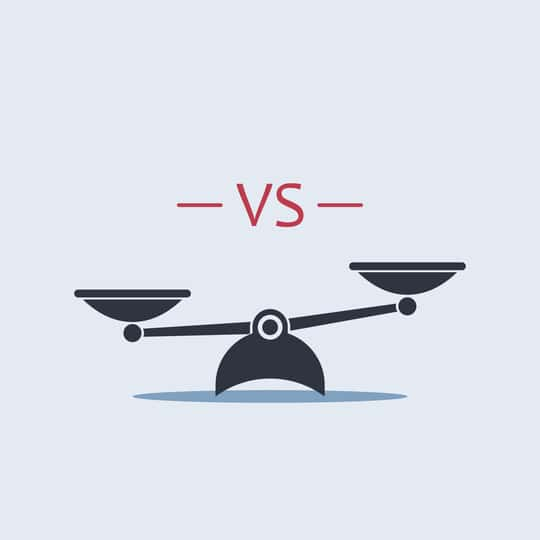Jerome Powell, Federal Reserve Chief, said on Tuesday that the Fed could react more quickly to its low-interest-rate policies to combat high inflation. The Consumer Price Index (CPI) stood at 6.2% in October 2021 in the U.S., the highest level in over three decades. In addition, the U.S. Central bank could accelerate bond tapering, allowing it to raise its key rate as early as the first half of 2022. A higher Fed rate should boost financial companies’ interest revenue.
The global financial services industry, which is represented by the Financial Select Sector SPDR ETF (XLF), has advanced about 31.1% since the beginning of the year, outperforming the SPDR S&P 500 Trust ETF (SPY), which has gained 22.3% over the same period.
With this in mind, let’s analyze and compare two bank stocks: JPMorgan Chase & Co. (JPM - Get Rating) and Bank of America Corporation (BAC - Get Rating), to determine which is a better investment right now.
JPMorgan Chase & Co.
Headquartered in New York, JPM operates as a financial service company worldwide through its key four segments: Consumer & Community Banking, Corporate & Investment Bank, Commercial Banking, and Asset & Wealth Management.
Shares of JPM are up about 26.9% year-to-date (YTD), underperforming its peer, BAC, and benchmark, XLF.
Recent Developments
On November 30th, Reuters announced JPMorgan’s intentions to back KKR’s EUR 45 billion purchase of Telecom Italia. According to a letter of commitment, the bank is ready to increase the commitment to over EUR 45 billion if needed.
Financial Overview & Analysts Estimates
On October 13th, JPMorgan reported earnings for the third quarter of 2021. In Q3, total revenue has risen 1.7% year-over-year to $29.64 billion, which is in line with the Wall Street consensus estimates. Also, the company reported GAAP EPS of $3.74, beating Wall Street expectations by $0.74.
Its net interest income stood at $13.08 billion, up about 1% from the prior-year period, caused primarily by balance sheet growth and higher interest rates. Also, the bank should reward its shareholders with an annual dividend payout of $4.00, leading to a forward yield of 2.48%.
Currently, Wall Street forecasts JPM’s earnings to decrease about 5% in the fourth quarter of 2021 to $2.93 per share. Furthermore, analysts expect that its Q4 revenue could moderately rise to $29.46 billion, implying an increase of 0.80% on a year-over-year basis.
Bank of America Corporation
Founded in 1784, BAC is a diversified bank that provides multiple banking and financial products and services for consumers, institutional investors, companies, and governments worldwide.
Shares of BAC have increased by about 48.1% year-to-date (YTD), outperforming its benchmark and the broader market.
Recent Developments
On October 20th, Bank of America announced that its board of directors had declared a quarterly dividend of $0.21 per share, payable on December 31st, in line with previous. It translates into a forward yield of 1.87%, which is below the sector’s median threshold of 2.57%.
Financial Overview & Analysts Estimates
In the third quarter of 2021, BAC’s revenue was up 12.2% on a year-over-year basis to $22.77 billion, beating analysts’ estimates by $1.17 billion. The company’s GAAP EPS has been reported at $0.85, topping estimates by $0.14.
The company’s third-quarter net interest income of $11.1 billion increased by about 10% compared to its year-ago value of $10.13 billion. BAC’s non-interest income rose 14% to $11.7 billion in Q3 due to record asset management fees, solid investment banking revenue, and higher sales and trading revenues. Also, the Bank continues to be well-capitalized with a common equity Tier 1 ratio of 11.1%, which is well above the regulatory requirement of 8%.
For the fourth quarter, the analysts expect BAC’s EPS to stand at $0.78, showing 32.2% year-over-year growth. Additionally, an $22.29 billion average revenue estimate for the next quarter indicates a 10.30% improvement.
Comparing Valuations
In terms of Forward Non-GAAP P/E, BAC is currently trading at 12.89x, which is slightly higher than JPM, whose multiple is currently at 10.8x. In addition, JPMorgan looks undervalued compared to the sector’s median of 11.31x.
When it comes to the Forward PEG multiple, BAC’s PEG multiple of 1.67x is about 142% higher than JPM’s 0.69x. What is more, JPMorgan looks discounted compared to the sector’s median of 0.94x.
The Bottom Line
According to Research And Markets, the global financial services market is projected to reach $28.53 trillion by 2025, growing at a CAGR of 6%. So, both banks should capitalize on this growth. However, I believe that BAC is a better pick than JPM at current levels. Although JPM looks cheaper from a valuation standpoint, I think that Bank of America‘s premium is worth paying, considering its strong fundamentals and growth prospects.
Want More Great Investing Ideas?
JPM shares were trading at $160.13 per share on Friday morning, down $1.08 (-0.67%). Year-to-date, JPM has gained 29.18%, versus a 22.85% rise in the benchmark S&P 500 index during the same period.
About the Author: Oleksandr Pylypenko

Oleksandr Pylypenko has more than 5 years of experience as an investment analyst and financial journalist. He has previously been a contributing writer for Seeking Alpha, Talks Market, and Market Realist. More...
More Resources for the Stocks in this Article
| Ticker | POWR Rating | Industry Rank | Rank in Industry |
| JPM | Get Rating | Get Rating | Get Rating |
| BAC | Get Rating | Get Rating | Get Rating |






